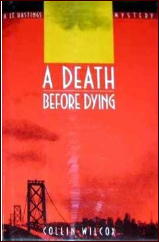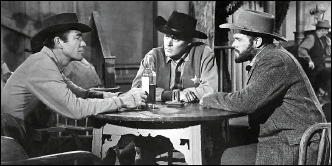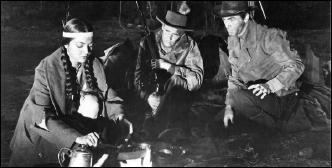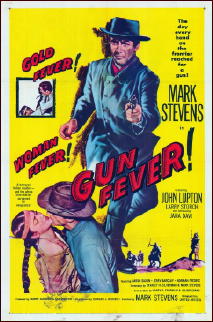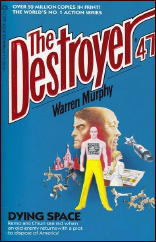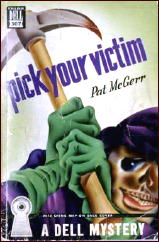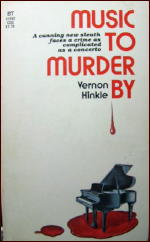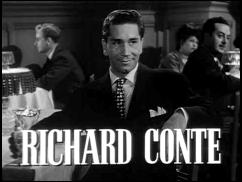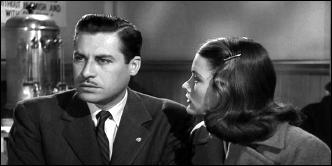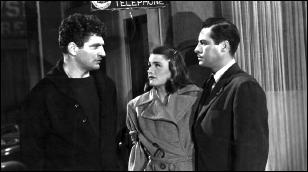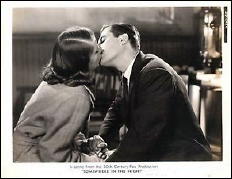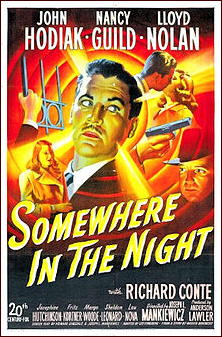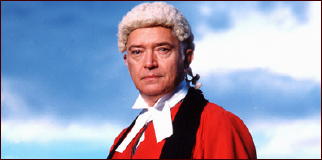Thu 16 Jan 2014
A Movie Review by David Vineyard: MAKE MINE MINK (1960).
Posted by Steve under Crime Films , Reviews[15] Comments
MAKE MINE MINK. The Rank Organisation, 1960. Terry Thomas, Athene Seyler, Billie Whitelaw, Hattie Jacques, Elspeth Duxbury, Jack Hedley, Raymond Huntley, Kenneth Williams. Screenplay: Peter Blackmore, Michael Pertwee, Peter Coke (his play A Breath of Scandal). Director: Robert Asher.
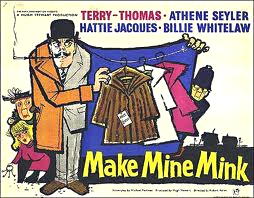
Mannish Miss Parry (Hattie Jacques) complaining about her buxom student, in a low cut blouse, not being ready for her debut in society: “She’s coming out next week and she’s not ready.â€
Major Rayne (Terry Thomas) face to face with the young lady’s cleavage: “It looks to me as if she’s already come out.â€
That sums up British comedies of this era, and the mix of droll wit, music-hall vulgarity, satirical barbs, and affectionate jape that mark the typical British comedy from the post war era on. Faced with Little Britain as the empire came apart and the economy struggled to rebuild; the British comedy came into a golden era not unlike the romantic and screwball comedies this side of the pond in the wake of the Depression. Hard times seem to be good for comedy.
Major Rayne, Miss Parry, and Miss Pinkerton (Elspeth Duxbury) are boarders in the flat owned by Dame Beatrice (Athene Seyler) and kept in some line by Lily (Billie Whitelaw) the ex-con maid. Dame Beatrice doesn’t really charge what she should, and spends her time funding her favorite charities while neglecting herself. She doesn’t even have a new coat.
Which is why when the arguing neighbors throw out a mink stole Lily picks it up — via Major Rayne’s fishing line. Dame Beatrice is pleased but horrified, and enlists Major Rayne, Miss Parry, and the nervous flighty Miss Pinkerton to return the fur after an attractive young policeman (Jack Hedley) shows up asking about furs.
The Major (he was in the vital business of providing tea time to the troops) plans the campaign, and each is assigned a role. And despite a spate of miscalculations and miscommunication they succeed, returning the fur and even convincing the neighbor his senile mother in law had the fur all along.
And they have a fine time doing it.
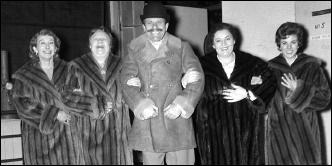
That may be why when Dame Beatrice reveals she can no longer care for her numerous charities or continue their residence the four proto-felons begin to think in terms of heisting furs for fun and profit.
Of course it might have helped if Lily wasn’t curious what was going on and dating that attractive young policeman Jim Benham.
With the plot in motion the cheerful quartet set themselves increasingly difficult heists (always complicated by the exasperating Miss Pinkerton’s shambled nerves) until police and press are spreading sensational accounts of the daring criminal gang pulling off fur heists all over London. None of them actually work right, but somehow all of them are successful.
There are other complications. Turning those furs into money being the first one. Just how does one find a fence? Major Rayne tries his hand at a rough club in the East End whose name he pried out of Lily (in a leggy funny awkwardly sexy scene where she thinks he is coming on to her after her shower) by claiming he was writing a novel (she was so relieved she would have told him anything).
That excursion into the underworld is a fine little set piece of misunderstanding with Thomas waving Dame Beatrice’s pearls about and drawing absolutely no attention. And the reason is frustratingly apt.
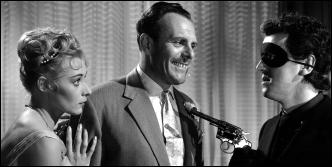
They do find a fence though — Dane Beatrice’s fashionable nephew the Hon. Freddie (Kenneth Williams much less broad than in his Carry On persona) who is delighted at the old girl’s new career — he even invites her to his casino night — all the best people, and the gang’s next target. Which gets really complicated when the police raid for real in the middle of the gang’s fake raid.
Meanwhile Lily has found them out and is horrified. She even plans to take the blame and get the others off when Inspector Pape (Raymond Huntley) shows up the next morning with her young man in tow asking questions.
Needless to say the ending is happy, Lily has her man, and the gang got away with it and learned their lesson swearing to never steal furs again. But Lily’s young man did mention to Dame Beatrice the police home for foundlings is desperately in need of help.
And after all they only swore not to steal furs …
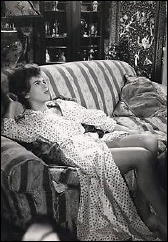
I’ve always preferred Terry Thomas when his brash British snobbery and self satisfaction were combined with a bit of humanity and even reluctant humility. Fine as he was as dastardly cads, there was more there, and in films like this he was more than a cartoon. Good as he was in Snidely Whiplash mode, he could do more when he got the chance (A Matter of W.H.O.).
Athene Seyler was a gifted veteran at the slightly dizzy grand dame game, and having the wonderful Hattie Jacques and Elspeth Duxbury in a single film is a coup. They were among the best the distaff side of British comedy had to offer at that point, and all three are at their bests here.
Now Billie Whitelaw … yes, Billie Whitelaw … I don’t know what it is about Billie Whitelaw, she’s attractive, but not a sex bomb; she has a nice figure and very nice legs, but not exceptional; yet there’s that voice — a little husky with a hint of whiskey-throated seduction there; and that look — the Billie Whitelaw look — could melt glaciers; and there is just something in the way she walks, moves, even stands that is just plain sexy. Not all that long ago she showed up in one of the last seasons of The Last of the Summer Wine, and she hadn’t lost a whit if it.
Did I mention Billie Whitelaw …?
Make Mine Mink may not be at the level of the best of the Ealing comedies, but very close, more broadly observed than some of the legendary films of that era, but for that a very very funny caper film both gentle and barbed, sweet and a bit sexy, silly and rather touching. No it isn’t The Lavender Hill Mob, The Ladykillers, Tight Little Island, or The Titchfield Thunderbolt, but it is a delight, a romp, and a wonderful evening of sly humor and even belly laughs.
Make mine Make Mine Mink.
